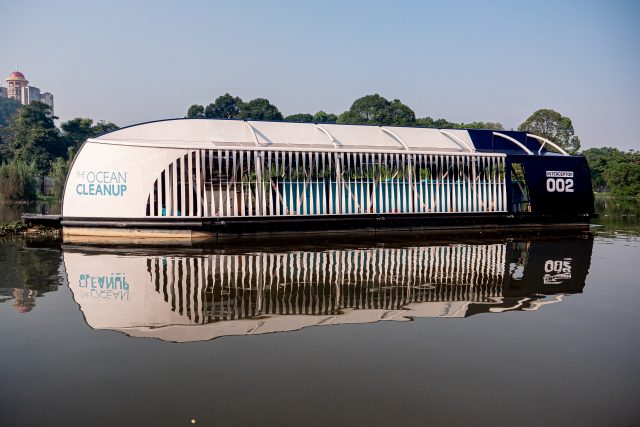- About
- Topics
- Story
- In-Depth
- Picks
- Opinion
- News
- Donate
- Signup for our newsletterOur Editors' Best Picks.Send
Read, Debate: Engage.
| March 13, 2023 | |
|---|---|
| topic: | Conservation |
| tags: | #High Seas Treaty, #ocean conservation, #ocean pollution, #environment |
| by: | Gerardo Bandera |
The new treaty vows to safeguard the previously unregulated areas of the ocean from destructive human activity. The negotiations involved politicians, scientists, activists and NGOs from dozens of countries, each of which contributed their efforts to decide how best to preserve this vast region of the world from further exploitation and degradation.
The UN last signed a treaty to regulate ocean activity in 1982 - the UN Convention on the Law of the Sea - which designated any ocean area further than 200 nautical miles from the shore of a country as the high seas, or international waters. The high seas account for over two-thirds of the oceans, or 70 percent of the planet’s surface area, over 80 percent of which remains unexplored.
However, in the past 40 years since the ratification of this regulation, the drastic loss of biodiversity due to human exploitation of these areas, as well as the increased awareness of the impacts of climate change, have urged politicians to improve the protection of this region.
While the final text of the treaty has yet to be released, the major points that ocean activists have pushed for are known. The treaty includes clauses that:
The UN’s decision to protect the ocean was sparked by the understanding of its importance for maintaining life as it is and regulating the climate, as well as from witnessing how much human activity has disturbed ocean activity.
Roughly 50 percent of the world’s oxygen comes from marine life; oceans store up to 83 percent of the planet’s carbon; an estimated 2 million species live in the ocean. But unchecked practices have threatened the aquatic environment and the stability of life.
In 2022, at the UN Biodiversity Conference, the international body had devised a deal to protect 30 percent of the world’s biodiversity by 2030 - also known as the 30x30 deal.
The International Union for Conservation of Nature (IUCN) warned of a “biodiversity crisis” in marine ecosystems following the conference, stating that at least 1,550 marine species are threatened with extinction.
Unregulated whaling has depleted the populations of blue whales, overfishing has threatened tuna fish, and global warming has caused widespread bleaching of coral reefs. In fact, 36 percent of coral reefs are threatened with extinction, according to the IUCN, while up to 90 percent of sharks and ray species are on the organisation’s red list.
The new High Seas Treaty promises to establish marine protected areas (MPAs) in the high seas. Within these areas, international regulations will set limits or completely ban fishing and resource mining.
Read our coverage on the Fishing Industry in Latin America
Anthropogenic activity has polluted oceans, causing drastic biodiversity loss and a change in marine environments. Oil spills, for example, kill marine creatures by exposing them to high levels of toxic chemicals, or by compromising their natural defences and water-repellent coatings. Regulation on fracking and oil drilling in the oceans are especially required to prevent future catastrophes.
Similarly, 14 million tonnes of trash - especially cigarettes, food wrappers, and plastic bottles - are dumped into the oceans annually, killing aquatic life. When ships in the high seas cast or discard fishing nets, they suffocate fish and coral species or ensnare whales and dolphins, which drown due to exhaustion.
Environmental activists have decried that deep sea mining could have irreversible and devastating consequences on marine environments. The excavation of the seafloor for minerals and resources would require huge drills and vacuums, which would create large clouds of toxic sediment that would suffocate marine creatures.
This is only justified to generate profit for mining companies, who claim that these valuable resources would place less strain on the extraction of land environments.
Understanding the international nature of these waters, the treaty also vows to share the research discoveries and resources found in these areas with low-income nations that cannot access them. These resources are important not only in scientific research, but are also used as ingredients in pharmaceutical products.
However, developing countries that are not able to access these resources sought to prevent what they called ‘biopiracy,’ by which wealthy nations exploit and profit from the resources right outside of their coastlines, reaping the reward without sharing with nations of the Global South.
To combat this, once the treaty goes into effect, any monetary benefits from these resources must be “shared in a fair and equitable manner.” Scientists conducting research with genetic resources found in the high seas will have to disclose their research and where their samples were collected.
The final version of the High Seas Treaty is yet to be drafted. Once it has been translated and given a final form, UN countries will have to implement the treaty regulations at the domestic level through their own governing bodies.
Once the 60th nation has signed the treaty, a countdown of 120 days will begin, after which the terms of the treaty will take effect.
The success of the treaty will depend on each government's faithful commitment to its implementation and the prioritisation of environmental protection over economic exploits. Additionally, once the treaty has been instated, national and international bodies will have to maintain compliance with the regulations, setting up oversight committees and punishing infractions.
If all is done accordingly, this agreement is a promising defence of the ocean and the planet.
Image by Amber Wolfe.
By copying the embed code below, you agree to adhere to our republishing guidelines.
